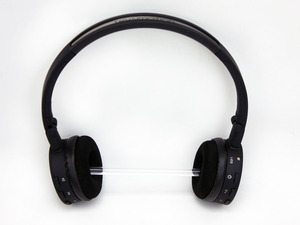If you need a hearing aid, it will likely become a large part of your life. You’ll need to remember to put it in and take it out, to clean it when necessary and to replace it when it breaks. Many people are concerned about how the hearing aid will look and how noticeable it will be come, which is another factor you should consider when choosing a hearing aid. They can also be a matter of safety, particularly if you live alone, because failing to hear a strange noise might rob you of the time needed to seek help in an emergency.
There are essentially four types of hearing aids from which you can choose, based primarily on size and effectiveness. The first is a hearing aid that fits directly into the canal of your ear. It is the smallest type, but it isn’t easily customizable and the battery life is usually far shorter than that of other hearing aids. The second type is an aid that fits partially in the canal. It will be more visible when you wear it, but it can offer more features than an aid that is lodged completely in the ear canal. It has a longer battery life, but can be more difficult to adjust.
The third type of hearing aid is arguably the most common, and sits in front of the canal in the outer ear. This is an especially convenient aid for those with severe hearing loss because it has more features and can have microphones attached to increase effectiveness. It’s drawbacks are that it is much more visible than aids which fit directly into the canal and users may pick up more wind and background noise.
The final type of hearing aid is the kind which fit behind the ear. These are by far the most customizable, but are also the most visible. It fits behind the ear with a component that rests inside the ear for added intensity. You’ll find that a behind-the-ear hearing aid will work for people of all degrees of hearing loss, but that they are going out of style much more quickly. If you’re concerned about the aesthetic qualities of your hearing aid, this is probably not the best choice.
In each of these four types of hearing aids, you’ll find that the technology will vary in addition to the size and shape. The least-expensive technology is what has been used for several decades: Analog. It is by far the least convenient because your audiologist sets the amplification when you first purchase the aid and it can’t be adjusted at will unless you remove it to change the setting. Situations involving loud noises may be difficult for people with analog hearing aids and you’ll find that they are harder to locate as most hearing aid companies are switching to digital.
Digital technology in hearing aids is far more advanced. Rather than limiting your aid to a set amplification, a computer chip inside the aid automatically converts sound according to its current volume and the pre-programmed depth of your hearing loss. These are much more expensive but are more popular now that digital technology has been perfected.
When choosing a hearing aid, you’ll need to make an appointment with a reputable audiologist. The best way to go is to get a referral from your primary care physician or from a close friend you can trust. These days, scams are prevelant in every industry and you don’t want to trust your hearing (or your money) to just anyone. An experienced and legitimate audiologist will spend time getting to know you and your hearing needs. He or she will make an impression of your ear and help you to find an aid that will best suit your lifestyle.
In most cases, hearing aid manufacturers will provide a trial period of seven days to one month so that you can try the aid and make sure it suits your needs. If a trial period isn’t offered, you may be better off going with a different brand. Make sure that the aid comes with a full manufacturer’s warranty and that you send in any necessary paperwork.
Choosing a hearing aid doesn’t have to be a difficult process, but make sure you’re happy with the one you choose. If it doesn’t increase your hearing capabilities and if you find it uncomfortable, your lifestyle won’t be improved.




